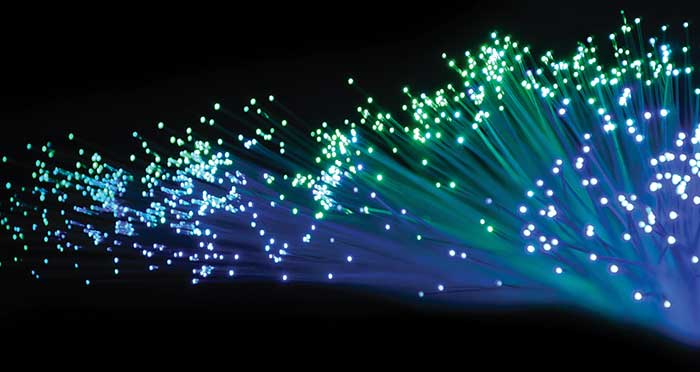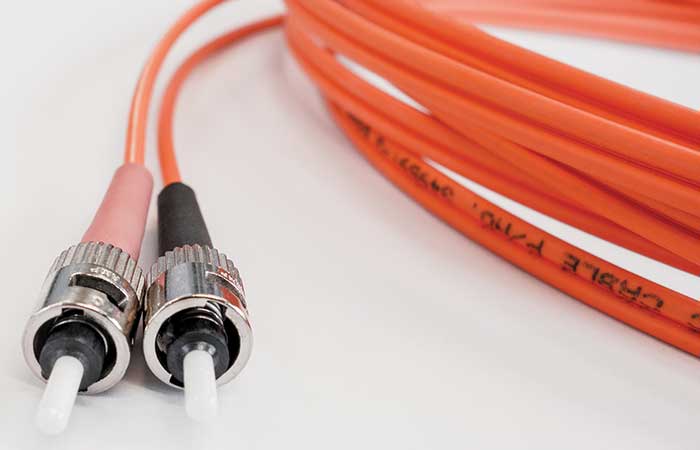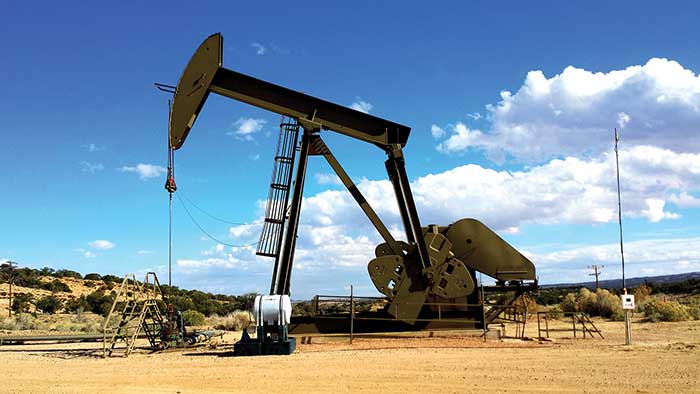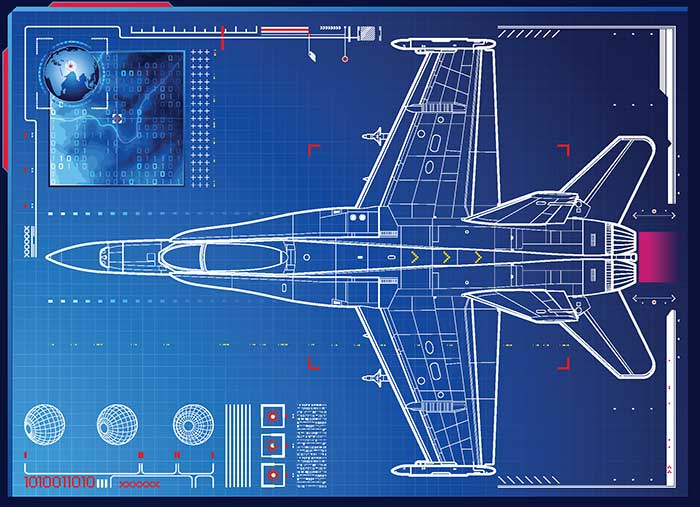The concept of fiber optics was first introduced over a century ago when scientists in Europe demonstrated the guiding of light by refraction. Today, it impacts broadband communications networks, as well as oil and gas monitoring, and defense and aerospace applications.
Optical fiber technology itself is not new. But it is quickly expanding and finding integration in novel sensors and laser systems.
In 2017, a total of 421 million kilometers of optical fiber is expected to be installed in communication networks worldwide.
“This total is 10 percent more than the amount installed in 2015, and it is almost twice the amount installed … in 2011,” said Richard Mack, principal analyst with market research firm CRU International.

Fiber optics technology is evolving at an exponential rate, with novel sensors and lasers, and increased application in defense, aerospace, and oil and gas monitoring.
Companies almost everywhere are upgrading telecommunications networks to 100-Gbps fiber-based systems to meet the global demand for higher network speeds.
Adam Carter, chief commercial officer at Oclaro, a California-based provider of optical and laser components and solutions, is seeing further development of 100-Gbps systems toward those that offer 400, 600 and even 800 Gbps. There are also many that are now developing a 10-year multimode fiber road map, noted Robert Lingle Jr., director of market and technology strategy at Norcross, Ga.-based OFS, which manufactures fiber, cable, and signal and pump lasers. These road map guidelines will be used to develop fibers, cables and transceivers.

Further development of current 100-Gbps fiber-based systems is moving toward those that could offer as much as 800 Gbps.
“The driving force behind this is the ever-increasing demand for more telecommunication capacity and internet services,” said Paul Foy, senior fiber scientist and manager of manufacturing engineering at Thorlabs Inc. in Newton, N.J. “Manufacturers are focused on increasing transmission rates and improving their system performance, in addition to cutting costs.”
He added that improvements to optical fiber design and miniaturization of system components are also moving this industry sector forward. “By changing the geometry and/or glass composition of an optical fiber, the light transmission capability of the fiber can be changed. This allows fibers to be designed to achieve specific network traffic requirements. In addition, there is a need to miniaturize optical fiber communication components, and this trend should continue in the future.”
The state of Ohio has been working to expand its broadband network and invested $13 million several years ago to connect Cleveland, Cincinnati and other cities. Now, it boasts “more fiber optical broadband installed per capita than any other state in the nation, connecting all of its major cities and research institutions.” The Erie, Pa., region is advancing in its fiber networks, as well. Since 2008, Velocity Network has laid about 400 miles of fiber optic cables, mainly for commercial customers. Residential customers are in line to acquire this upgrade, replacing the region’s aging copper wire network.
Another novel fiber sensing system that is emerging is an ultrahigh-speed sensor — developed by a team from the Tokyo Institute of Technology, the Japan Society for the Promotion of Science and the University of Tokyo, and detailed in a paper published in Light: Science & Applications (doi: 10.1038/lsa.2016.184) — that is capable of monitoring in real time. A distributed sensing system, it is designed to examine strain and temperature in physical structures. It requires light injection from only one end of the fiber, demonstrating a sampling rate of 100 kHz; this is an improvement of over 5000 times the conventional rate. Traditionally, real-time distributed strain measurement has been achieved only for two-end access systems.
Oil and gas monitoring
A fiber optics-related advance over the past several years has been in coating technologies, which “have allowed optical fiber sensors to survive in the hydrogen-rich, high-temperature environment associated with oil wells with lifetimes of over 15 years,” according to David Krohn, founder of OIDA Photonic Fiber Optic Sensor Consortium and managing partner of Light Wave Venture LLC. Carbon coatings, too, have played a key role in enabling fibers to survive in the environment associated with in-well applications in the oil and gas industry.

Optical fiber technology has proved advantageous for oil and gas monitoring, with sensors that provide data for environmental conditions, equipment performance and reserve levels, among others.
The overall distributed fiber optic sensor market is expected to reach about $1.7 billion by 2022, at a CAGR of 15.09 percent, according to a report by Fast Market Research. This can be attributed to “increasing applications in the oil and gas vertical, increasing demand from the civil engineering vertical, and reliability of distributed fiber optic sensors while working in the challenging environments.”
Krohn cited distributed acoustic sensing (DAS) as another emerging fiber-based technology, which “has been very beneficial to applications such oil/gas seismic monitoring, pipeline monitoring and perimeter security.” Distributed fiber optic sensors have also been used for sensing to detect temperature changes and pressure around areas where there is oil or gas.
Fiber optics is also an advantageous option in many applications, including in oil and gas, because it is impervious to electromagnetic interference. Optical fiber sensors provide a wide range of data about environmental conditions including oil reserve levels and equipment performance, notes South Carolina-based AFL Global, manufacturers of fiber optic products and equipment. And oil drilling is moving further offshore, according to AFL, at distances that traditional copper wire cannot handle due to limitations in bandwidth.
Use of fiber optics in oil- and gas-related applications should continue in the future. And driving growth in this sector is the push to further digitalize and automate oil and gas technologies and also make operations more efficient. Mid-IR fiber laser sources, as well as mid-IR transmitting fibers, are finding increased use here, including in environmental applications.
Such systems are also finding applications in defense and explosives detection.
Defense and aerospace
SWaP-C (size, weight, power and cost) improvements in the defense and aerospace sectors are benefiting greatly from fiber optics technology, in part because of its immunity to electromagnetic interference. Bruno Daffix, of Airbus Defence and Space GmbH — a Munich-based division of the Airbus Group — cited pictures and video taken by drones, aircraft or satellites that carry sophisticated cameras, radar and other sensors. “These produce higher and higher resolution imagery and video, so there must be more bandwidth to transmit and analyze this data.”
Krohn cited other technological advances in fiber optics. “Advances in material design and fabrication techniques have advanced mid-IR fiber technology to be more robust,” he said. “And [to] facilitate military applications that require ruggedness.”
In aerospace applications, fiber Bragg grating sensors monitor aircrafts’ structural integrity and are small enough to fit space-restricted settings and embedding applications. Fiber sensors enable structural and computer health, which can improve aerodynamics and performance through detection of nonvisible damage because of impacts or overloads. In a study by NASA’s Armstrong Flight Research Center in California, fiber optic strain sensors were found to permit orders of magnitude, more measurement points for orders of magnitude and less weight than traditional electronics.
According to market and technology forecast firm ElectroniCast Consultants, the global fiber optic connector and mechanical splice consumption market reached $3.82 billion in 2016. And multimode connector use is expected to jump to over $3.2 billion by 2026 (up from nearly $2.46 billion in 2016). Multimode fiber is best suited for use in short lengths, such as those used in LANs, as well as
in data centers and, notably, in military and aerospace applications.
Fiber technology is expected to continue its advance in defense and aerospace applications. Fiber-based dense wavelength division multiplexing is a technique that multiplexes a number of optical carrier signals onto a single optical fiber by using different wavelengths of laser light, enabling bidirectional communications over one strand of fiber and multiplication of capacity. While it can help with communications network upgrades, as it increases bandwidth, it can also benefit data analysis and test systems for military operations and aerospace.

Fiber optics technology is increasingly finding applications in defense and aerospace, given its higher bandwidth and immunity to electromagnetic interference.
Fiber optics technology is expected to gain traction in the biomedical and biophotonics realms, as well, with the advancement of sensors and lasers.
“Fiber will expand in sensor applications moving into biomedical diagnostics,” Krohn said. “Optical fiber technology will enhance medical imaging and therapeutic applications such as optical coherence tomography and photodynamic therapy.”
Optogenetics falls under this photonics domain, too. Fiber optics technology and systems have become integral to the development of techniques for studying biological molecules, cells and tissue, as they enable precise delivery of light to modulate molecular events.
This is accomplished by adding genetically encoded proteins to the cells, according to Foy. “These proteins are optically activated and change the cell behavior. For example, this technology has enabled the nervous system to be studied and defined in unprecedented detail.”
Mid-IR fiber laser sources can also be used to identify multiple molecular species in a single spectroscopy scan, and are practical for a number of bio-related applications such as laser surgery, tissue ablation and photo-dermatology, Foy said, noting that this is due to “the strong absorption lines for water molecules near 3 and 6 µm.”
Oclaro believes the future of fiber optics is strong in these and other photonics industry subsets.
“The industry is having to become more dynamic in both the speed of decision-making, as well as technology choices,” Carter said, adding that it will be effective for companies to consolidate efforts in support of rapid development of bandwidth and advancements in fiber optics applications. “As an industry, we also have to look at the variety of form factors that proliferate at new bandwidths, as developing higher-speed components and modules need significant investment.”